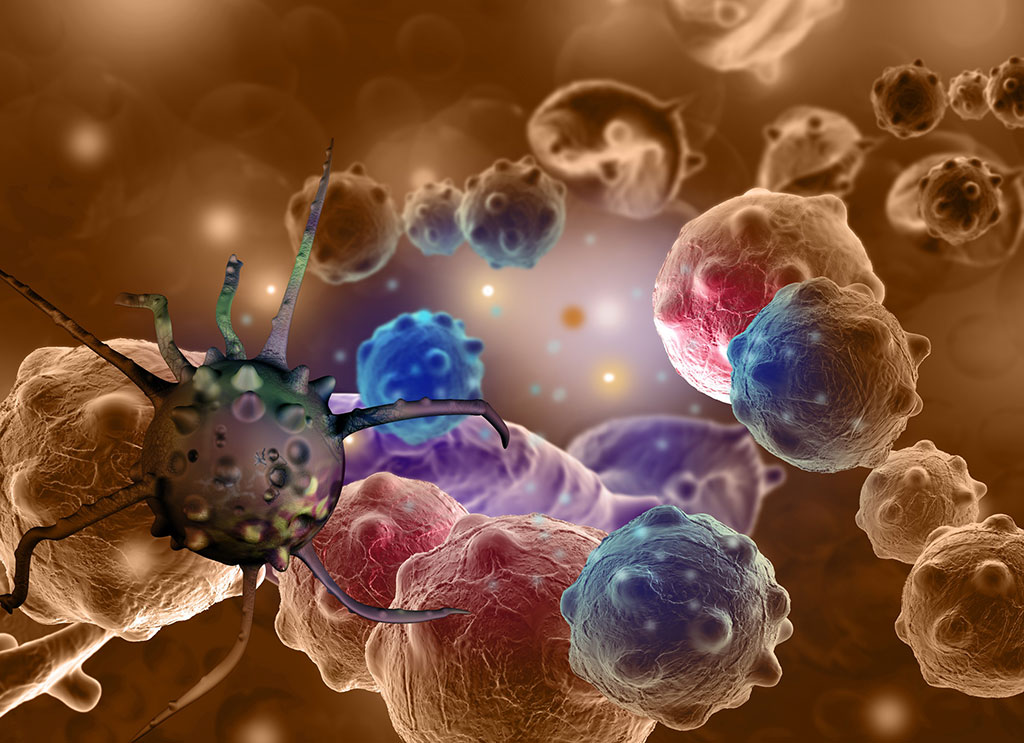New Pathologic Scoring System Accurately Detects Remaining Lung Cancer after Presurgical Treatments
Posted on 10 Nov 2023
Immunotherapies, which activate a patient's immune system to target tumors, are increasingly being combined with traditional chemotherapies to shrink tumors before surgery, enhancing the likelihood of successfully eliminating cancer. Oncologists typically depend on radiologic imaging to assess the remaining tumor after such treatments, but this method's accuracy can be limited, especially in early-stage cancers. Another promising approach is circulating tumor DNA (ctDNA) clearance, involving genetic sequencing to detect lung cancer-associated mutations in patient blood samples, but it is not yet widely accessible. To address this gap, researchers have now developed a new pathologic scoring system that accurately evaluates the amount of lung tumors left after presurgical cancer treatments, which can be vital in predicting patient survival.
This innovative research, led by investigators at the Johns Hopkins University (Baltimore, MD, USA), involved a new analysis of data from the CheckMate 816 study. The study had previously shown that administering immunotherapy (nivolumab) in combination with chemotherapy before surgery for non-small cell lung cancer improves event-free survival. The new pathologic assessment of residual viable tumor (RVT) in patients treated with these therapies offers a robust and efficient evaluation of the patient's response to treatment. This assessment could guide patient therapy choices and predict survival, supporting its use as an early clinical trial endpoint and a surrogate endpoint for survival in accelerated regulatory approvals.

During this study, the researchers employed a novel approach, immune-related pathologic response criteria (irPRC), to detect pathologic changes indicating that the tumor was present before immunotherapy but was destroyed by the treatment. This allowed them to measure the percentage of the tumor that was left, ranging from 0% to 100%. The ability to categorize patients into different groups based on the amount of tumor left has significant implications for future clinical trials and treatment decisions. For instance, patients with no remaining tumor may need less or no postsurgical immunotherapy, while those in the intermediate group might require extended therapy. Patients with a limited response might need to switch or add new therapies.
The next steps for the research team include identifying the most clinically meaningful RVT cutoffs. They also plan to use RVT to evaluate the effect of immunotherapy on lymph node tumors, which could enhance survival predictions. In the long term, there's potential for combining pathology, radiology, and ctDNA results for comprehensive monitoring of treatment efficacy. The pathologic scoring system has already demonstrated its applicability in assessing ten types of tumors, including lung, skin, and colorectal cancers. Its affordability and use of common pathologic tools could make it particularly beneficial in resource-limited settings.
“The common features seen across these multiple tumor types means that pathologists don’t have to switch to different scoring systems for assessing pathologic response. This is similar to what already exists in radiology, where the RECIST system is used across all tumor types for determining objective response to therapy,” said senior study author Janis Taube, M.D., M.Sc. “It is important that as these immunotherapies move into clinical trials and become standard of care, pathologists worldwide have a standard scoring system for the assessment of treatment response.”
Related Links:
Johns Hopkins University













